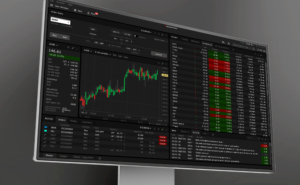At Friday’s close, the Dow Jones Index (US30) was up 0.97% (week-to-date +1.99%). The S&P 500 Index (US500) gained 0.35% (week-to-date +1.62%). The Nasdaq Technology Index (US100) was up 0.17% (week-to-date +1.59%). Investor rotation from technology sectors to economically sensitive sectors such as financials, industrials, and consumer discretionary contributed to the broader market’s gains. On the economic front, S&P’s US PMI for November rose to 55.3, showing the fastest private sector growth since April 2022.
Mexico’s Q3 2024 GDP grew by 1.1% quarter-on-quarter, the fastest pace since Q1 2022, beating estimates of 1%. Mexico’s annual inflation rate fell to 4.56% in mid-November, an eight-month low, down from 4.69% in October and below projections. Despite strong growth supporting gradual rate cuts by the Bank of Mexico, the peso (MXN) is under pressure from the US dollar rally driven by a strong labor market, sustained Fed policy expectations, and speculation about President-elect Trump’s inflationary policies. Reports of the appointment of trade hawk Robert Lighthizer as US Trade Representative and the potential appointment of Marco Rubio as Secretary of State with his hardline stance on Latin America further add to concerns.
Investors who bet on “buying a digital asset and the dollar” after Trump’s victory are still in profit. Bitcoin is approaching the $100,000 mark and is up about 50% since early October, when markets were leaning toward Trump’s election victory. The Dollar Index is up 3.6%. The Mexican peso has lost over 4%, and European stocks are down about 3%. However, resistance to Trump-related trades could increase if equity valuation concerns intensify or geopolitical risks challenge the rally in risk assets.
Equity markets in Europe were rising on Friday. Germany’s DAX (DE40) rose by 0.92% (week-to-date +0.38%), France’s CAC 40 (FR40) closed up 0.58% (week-to-date -0.27%), Spain’s IBEX 35 (ES35) gained 0.39% (week-to-date +0.16%), and the UK’s FTSE 100 (UK100) closed down 1.38% (week-to-date +2.46%). According to the ECB representatives, the European Central Bank’s policy will evolve regardless of what happens in the Federal Reserve. Bloomberg estimates that the Fed will cut rates in December, but policymakers will keep borrowing costs unchanged in January. Meanwhile, the ECB has cut rates three times since June and is expected to continue at its next four meetings.
Swiss National Bank (SNB) Chairman Martin Schlegel said on Friday he would reintroduce negative interest rates if necessary, which has weakened the Swiss franc against the dollar and euro. Schlegel said the Central Bank doesn’t like negative rates but could use them if necessary to reduce investor appetite for the safe-haven franc. The SNB has cut the benchmark rate to 1% three times during 2024 and expects further cuts. There is currently a 72% chance of a 25 basis point rate cut and a 28% chance of a 50 basis point cut at the Central Bank’s next meeting in December.
WTI crude oil prices rose by 1.6% to $71.2 a barrel on Friday, ending the week up more than 5%, helped by the escalating conflict in Ukraine, which added a geopolitical risk premium to oil prices. China unveiled new policies aimed at boosting trade, including support for energy imports, amid concerns over Trump’s potential tariffs.
The US natural gas prices fell to $3.1 per mmbbl after hitting a one-year high of $3.35 in November 21 amid expectations of higher production next year. The EIA noted that US drillers are expected to increase production next year for the first time since the pandemic amid increased export capacity and global demand for US LNG. Nevertheless, prices rose nearly 20% in November as estimates of the colder weather accelerated expectations for the start of the storage withdrawal season.
Asian markets were flat last week. Japan’s Nikkei 225 (JP225) rose by 0.06%, China’s FTSE China A50 (CHA50) fell by 1.83%, Hong Kong’s Hang Seng (HK50) lost 1.87%, and Australia’s ASX 200 (AU200) was positive 1.31%.
Japan’s Coincident Economic Index, which includes data such as output, employment, and retail sales, came in at 115.3 for September 2024, slightly below the prognoses of 115.7. Nevertheless, this result has improved compared to the six-month low of 114.0 recorded in August, reflecting a moderate economic recovery.









